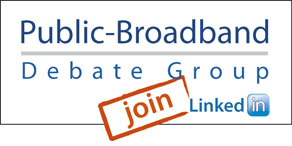Last week I read the latest WIK’s consulting report on NGA. The news coverage mentioned that a Germany-wide FTTH deployment would cost 120 billion euros and that an FTTC+VDSL deployment would cost approximately 40 billion euros. The news article did not make clear to the percentage of coverage these figures referred to.
The article ignited the discussion among colleagues but its findings were also discussed and commented in the popular broadband forum adslgr.com and elsewhere.
The 1:3 ratio implied for the deployment cost of FTTC/VDSL vs. FTTH/P2P is wider than what I expected. As a rule of thumb (underpinned by experience and FTTH studies coming from incumbents) I use 15/35/50 ratio for the feeder/distribution/drop cost. Therefore, I would expect to see a figure around 1:2 and 20-40 billions shorter.
The key assumption here is that the model hypothesized an 100% population coverage (i.e. extending NGA to the farthest village on the highest mountain). That can explain the ration 1:3 and might also justify an even greater ratio.
From my point of view, this can’t be considered a realistic scenario for at least two reasons:
- 100% NGA population coverage is way beyond the expectations of even the most enthousiastic FTTH/P2P supporter (especially considering that the mobile coverage even after 15-20 years of successful operation still covers on average 95-98% of a country’s population) so it can only serve as the cost function limit with modest practical value.
- the estimation of cost with no indication of ROI can not make a clear impact to the debate. For example, in the scenario where fiber access covers the entire population this would imply the diminishing of the PSTN maintenance cost, thus great reductions in OPEX.
A couple additional notes about the study:
- WIK seems too to apply in a broader sense the 15/35/50 ratio. They calculate the feeder network cost at 13,8% but they compound distribution and drop networks and account them for 75% of the total cost (this might also explain the difference in the overall FTTH/FTTC cost ratio)
- The cost for backhauling is estimated to somewhat less than 2%. That’s very low and very interesting expecially if you happen to be involved with designing your country’s FTTH network.
Overall, I think the study is an interesting read that provide a couple of interesting new angles, however, one must be certain that apples are compared with apples before using these results in isolation.
No related posts.


